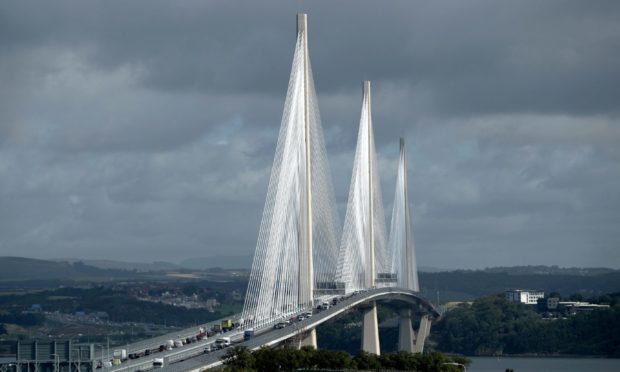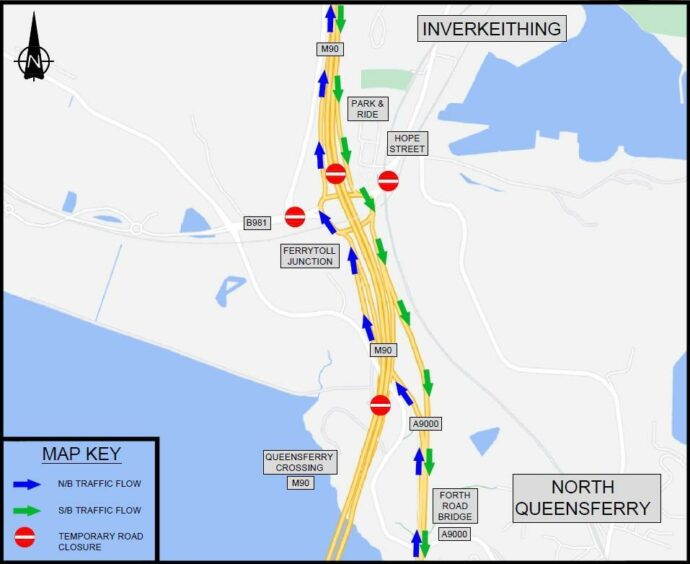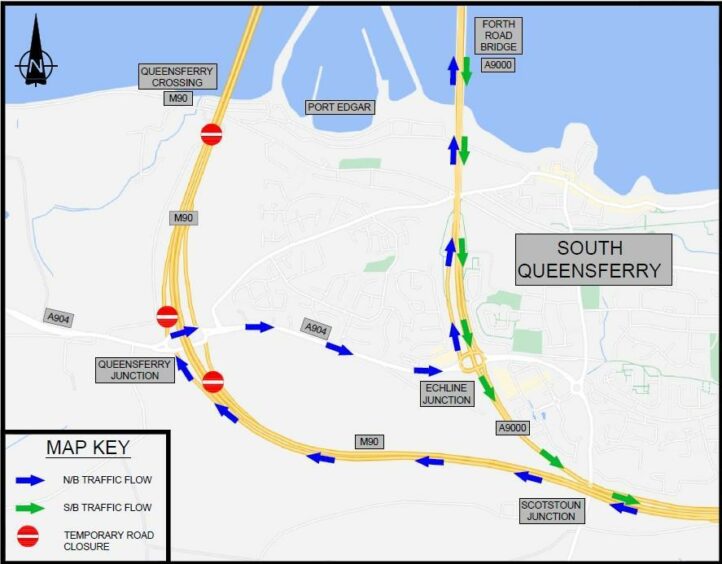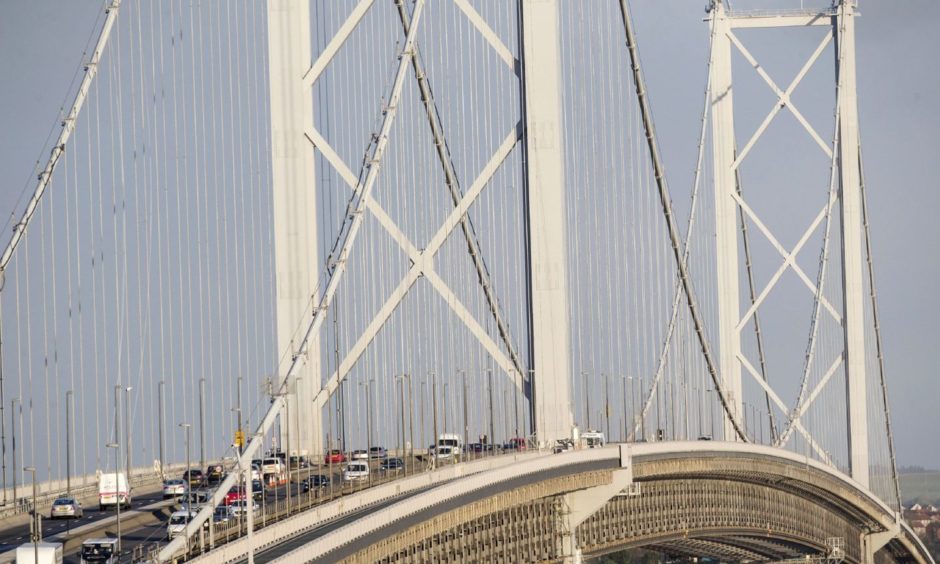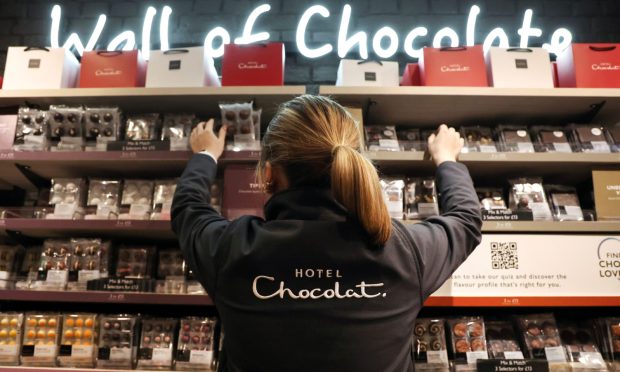A diversion trial is to take place next weekend on the Forth Road Bridge to see how it would cope if the Queensferry Crossing has to be closed.
From 10pm on December 11 until no later than 6am on December 12, the Queensferry Crossing will be closed to all traffic.
What is the diversion route?
Drivers travelling south will leave the M90 at junction 1B by Ferrytoll, crossing the Ferrytoll roundabout and then joining the Forth Road Bridge via the A9000, a route normally reserved for public transport.
Anyone trying to go north over the Queensferry Crossing will be diverted off at junction 1A near South Queensferry.
They will then travel along the A904 Builyeon Road to join the Forth Road Bridge from the Echline Roundabout.
During the diversion there will be no access to the Ferrytoll Roundabout eastbound from the B981 or westbound from Hope Street in Inverkeithing.
All local traffic wanting to access the M90 will have to go via junction 1C Admiralty near Rosyth and Inverkeithing.
Why is it happening?
It is part of trial measures designed to see how long it will take to put a diversion in place should the Queensferry Crossing, which opened in 2017, need to close.
Chris Tracey, BEAR Scotland’s unit bridges manager for south east Scotland, said: “Earlier this year we trialled a full diversion via Forth Road Bridge using the emergency links north and south of the bridge.
“This proved effective once open, but took over five hours to implement, with traffic diverted via Kincardine in the meantime.
“Last winter’s two closures of the Queensferry Crossing only lasted for a few hours, so there wasn’t time to fully implement this option.
“The purpose of next weekend’s trial is to test how long it takes to implement a diversion using the slip roads on either side of the bridge.
“This would not provide the same capacity but could reduce the need for all traffic to divert via Kincardine if it can be done quickly.”
Further trials needed should it be successful
He added: “For longer term closures we would still open the emergency links north and south of the bridge to maximise capacity.
“If this trial proves successful, then further trials and modelling will be required to test the impact on traffic before incorporating it into our procedures.
“We are also investigating other ways of speeding up the diversion process, such as barriers that can be opened automatically.
“If this trial proves successful, then further trials and modelling will be required to test the impact on traffic before incorporating it into our procedures.
“We are also investigating other ways of speeding up the diversion process, such as barriers that can be opened automatically.”
Laboratory tests on ice mitigation methods scheduled
Laboratory tests are also being carried out this week on potential methods of reducing the chances of ice forming or growing on the Queensferry Crossing.
The tests were initially scheduled for October but had to be postponed due to equipment breaking down at the Jules Verne Climatic Wind Tunnel in Nantes in north-west France.
Chris said: “There is no existing proven solution for preventing ice accretion, so the team has been carefully reviewing and examining a variety of possible options to determine which are worthy of further research and development.
“A number of options have been ruled out, however some are being taken forward for further investigations, testing and development. A peer review panel of international experts has been assembled to assist with this process.
“This is painstaking work, and it has taken until now to reach the stage where we are ready to test possible solutions.”
New equipment installed to monitor ice
Since last winter three thermal cameras have been installed on the bridge’s towers, nine in total, to monitor ice.
Nine thermal sensors have also been installed on the shortest stay cables to detect changes in surface temperature.
Both are in addition to the five clusters of weather sensors installed last year and the thermal sensors installed during the bridge’s construction.
They will help determine when the bridge is safe to reopen.
Chris said: “We don’t know when the next ice accretion event will occur, but road users can be assured that we are exploring every option for mitigating this risk and reducing the disruption caused if the Queensferry Crossing does need to close.”
